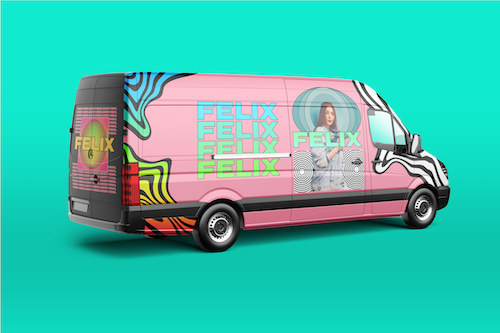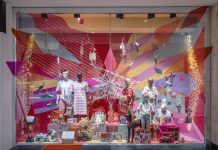According to Roland DG South Africa, a vehicle wrap makes use of a number of graphic design disciplines. You need to look at a vehicle wrap as a moving billboard. But at the same time when you are behind the car in slow moving traffic or when it’s parked, look at it as a brochure. A vehicle wrap is not a flat area, it has shape and style, and the design needs to accent the shape and form of the vehicle to be effective.
If the vehicle is a van, you can pretty much approach the design as flat sides or flat sheets of artwork area, but if it’s a shapely sports car, then you need to adjust your design to suit how the graphic areas will be presented to the reader. When you design a vehicle wrap, it makes use of page layout, packaging, advert design, logo design and presentation skills.
Assess The Design
Just as you design an advert, you need to assess the weighting of importance of the elements in the design. What do you want seen and read first and what should the reader move to next? On a flat sheet of paper, this principle can be followed easily as you simply apply the rules of reading left to right (in the Western world) and use colour, layout and size to ensure the reader absorbs the message in the correct reading order. On a vehicle, you need to look at the elements needed to present and place them in the best possible way to achieve the marketing goal. But it is complex as you don’t have a simple flat square surface to work with, and the viewer may not see the part of the car you want them to first.
Mirror Mirror
Designers often make the mistake of simply mirroring the design on one side to the other, and not taking into consideration that this often does not work. You can’t mirror the logo, but you could mirror the template shapes and angles and then apply your artwork according to that. Often a grid applied to one side should be applied to the other side and the elements rearranged. But this doesn’t always compute, as you have doors, handles, windows and beading to contend with. It’s a nice challenge to your design creativity.
Flat Or Round
Do you design on flat sheets or do you design the car as a real 3D mockup with shadows and lighting? This really depends on what you are comfortable with or what your expertise level is. In most cases, all you need to do is take photos of the car from the sides, front and back, then redraw the car template in a drawing package like CorelDRAW or Illustrator.
Once you have a nice clean template you can design your graphics, and scale the according to the size of the vehicle right in the design package. This will ensure you scale your graphics to the correct size and import images and pixel independent graphics at the right resolution for print. A rule of thumb for large format printing is to provide your graphics at a resolution of 150 pixels per inch. This is half the resolution required for normal litho printing. Most designers prefer designing flat as this is how you need to supply the artwork to the sign shop in the end.
Room To Move
When designing flat, remember that you are also designing in a flat space for something that has curves and a lot of shape, edges, handles and joins. Your artwork must be designed to be easily applied. If you have created a design that has exact spacing around a handle and to the edge of the car, then bear in mind that the wrap is like a massive sticker and no matter how skilled the applicator is, there will often be a couple of millimetres here and there that do not line up. So design your vehicle wrap to be forgiving and give the sign shop some space to move in when applying your design.
Vectors Vs Pixels
A key consideration when designing a vehicle wrap is that you are designing large format graphics and your graphics need to be at the right resolution. Vectors are often best for logos and text as they scale perfectly with no resolution issues. But photos, textures or special effects needs to be done at the right resolution to ensure crisp and clean graphics. Ensure that you actually measure the car you’re designing for beforehand to design for the final print size. If you can’t measure the vehicle, then simply judge from the photo you have to estimate the sizes, and the sign shop can always scale accordingly for you.
Sending To Print
So now you have designed the wrap and the client has signed off. What is the best way to supply the files and the artwork? Provide printouts of what was presented to your client to approve, all the artwork files at the right size and right resolution. You want to be friends with your sign shop, so give them everything they need to get your job done right.
Roland DG South Africa has launched the Wrap2Max Déjà Vu design competition. Enter now for a chance to win monthly cash prizes and your share of the R1 million total prize pool. This is South Africa’s biggest design competition in terms of prize money. Sign Africa and Modern Marketing are proud media partners of the Wrap2Max design competition. For full competition information, briefs and templates, entry fees and details, visit: www.2themax.co.za.
Roland DG
+27 11 875 9300
http://www.rolanddg.co.za










